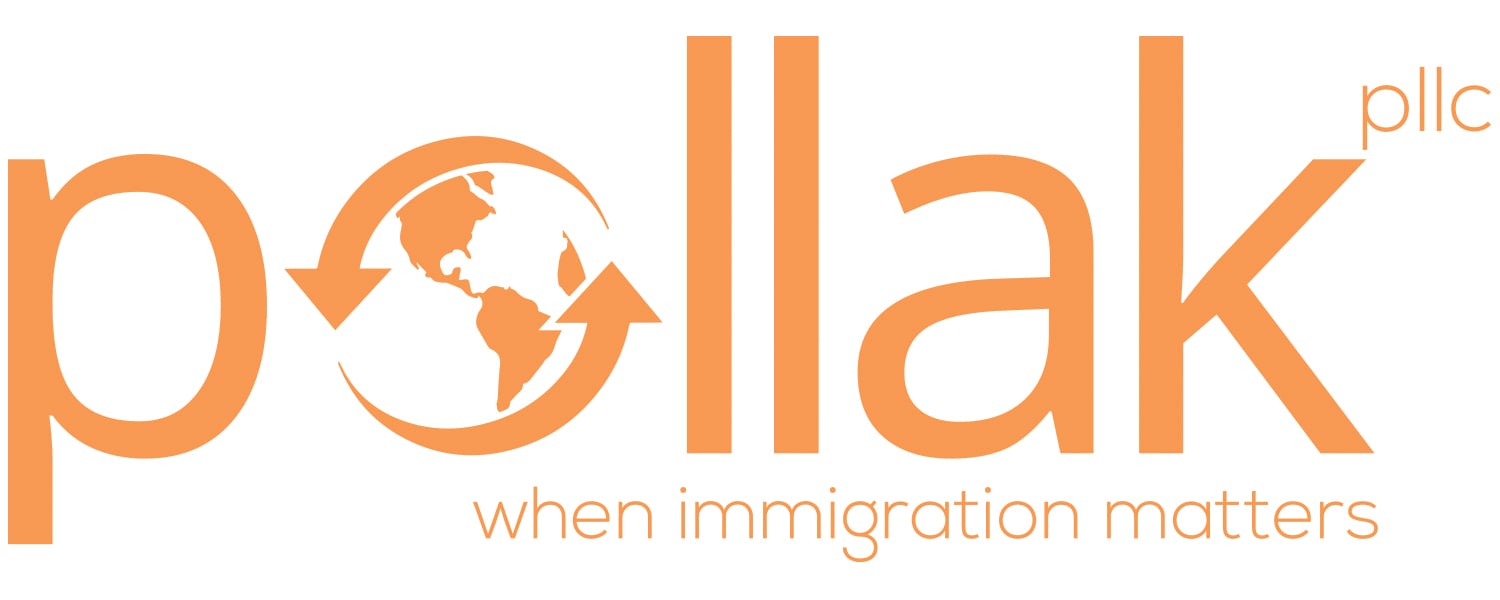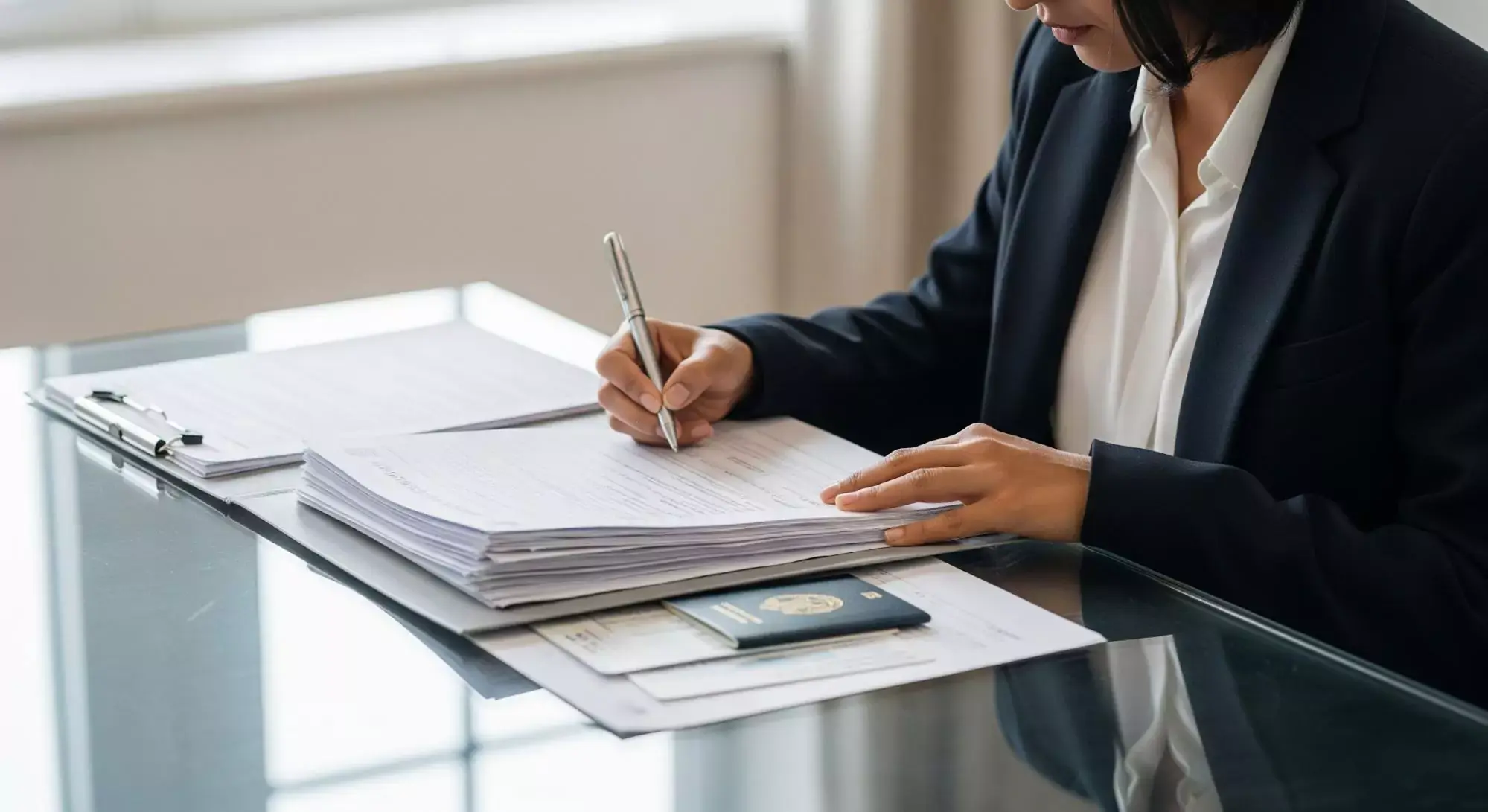The EB-2 visa offers a powerful path to permanent residency for professionals with advanced degrees or exceptional ability. However, that path is rarely a straight line. Depending on your country of origin, the need for labor certification, and the quality of your application, the process can take anywhere from several months to several years.
While some factors—like priority date backlogs or agency workload—are beyond your control, there are meaningful ways to accelerate your case. Legal preparation, proper documentation, and strategic filing decisions can reduce unnecessary delays and move your petition forward more efficiently.
How Pollak PLLC Helps You Avoid Delays and Move Forward Sooner
At every stage of the EB-2 process, timing and precision matter. Pollak PLLC works with clients to reduce avoidable wait times and maximize efficiency. The firm’s proactive approach focuses on front-loading the case with strong documentation, identifying process shortcuts where legally permissible, and staying ahead of potential roadblocks.
Strategic Preparation and Filing
Pollak PLLC helps clients prepare complete, error-free petitions. The firm ensures consistency across forms, organizes documentation logically, and submits applications in optimal order—so that USCIS can process them without confusion or delay.
Identifying Opportunities for Acceleration
Some cases are eligible for premium processing, concurrent filing, or early labor certification preparation. Pollak PLLC evaluates each client’s situation and identifies strategic opportunities to compress timelines without compromising legal quality.
Managing Employer and Applicant Coordination
Timing delays often stem from internal disorganization between applicants and their sponsoring employers. Pollak PLLC coordinates with HR departments and legal teams to align filings, confirm wage data, and execute recruitment steps swiftly.
Typical EB-2 Timeline: What to Expect
The total time required to complete the EB-2 process varies widely based on several factors. These include whether a labor certification is required, whether premium processing is used, and the applicant’s country of chargeability.
General Processing Estimates
- PERM Labor Certification: 6–12 months
- Form I-140 Petition: 6–15 months (15 days with premium processing)
- Adjustment of Status or Consular Processing: 9–24 months
For applicants from countries with high demand—like India or China—the wait for a current priority date may add multiple years to the overall timeline. Pollak PLLC monitors each client’s case to determine where time can be saved and where wait times are inevitable.
Case Complexity and Government Backlogs
Some cases move faster than others based on the strength of the petition. Incomplete filings, unclear job descriptions, or missing credentials can result in Requests for Evidence (RFEs), which delay the process significantly. Pollak PLLC helps ensure that each submission is complete, accurate, and tailored to meet USCIS’s expectations.
Premium Processing: When It’s Available and How It Helps
Premium processing is a USCIS service that expedites the adjudication of Form I-140. For a government fee, USCIS will review the petition within 15 calendar days.
When to Use Premium Processing
This service is available for most employer-sponsored EB-2 petitions, and it can be especially useful when visa availability is current or nearing current. Premium processing is also now available for certain NIW petitions, offering strategic benefits for self-petitioners as well.
What It Does—and Doesn’t Do
Premium processing accelerates the I-140 decision, but it does not influence labor certification, visa availability, or adjustment timelines. It’s most effective when used as part of a broader strategy, and Pollak PLLC advises clients on whether it makes sense based on their case timing and immigration goals.
Concurrent Filing: A Strategic Option for Faster Results
If a visa number is available at the time of filing, applicants may file Form I-485 (adjustment of status) concurrently with Form I-140. This option offers several advantages.
Benefits of Concurrent Filing
Concurrent filers can obtain work authorization (EAD) and travel permission (Advance Parole) while their green card application is pending. This flexibility is particularly valuable for those who want to change employers or avoid renewing nonimmigrant status.
Eligibility and Timing
Concurrent filing is only possible if the applicant’s priority date is current under the Visa Bulletin. Pollak PLLC regularly monitors visa movement and advises clients when concurrent filing is viable—ensuring that all forms are submitted correctly and on time.
Avoiding Delays From Requests for Evidence (RFEs)
RFEs are one of the most common causes of delay in the EB-2 process. While they do not necessarily result in denial, they pause adjudication and require additional time to respond.
Common RFE Triggers
- Inadequate proof of degree or experience
- Missing documentation of national benefit (for NIW)
- Conflicting job descriptions between PERM and I-140
- Insufficient financial documentation from employer
Pollak PLLC’s Preventive Approach
Rather than waiting for USCIS to flag issues, Pollak PLLC builds petitions with an eye toward anticipated scrutiny. The firm prepares complete evidence sets, adds explanatory memos, and confirms consistency across filings—all of which reduce the likelihood of RFEs.
Optimizing the PERM Process For Employer-Sponsored Cases
PERM labor certification is often the most time-sensitive and error-prone step in an EB-2 case. Because it involves compliance with Department of Labor (DOL) regulations and multiple moving parts across departments, delays at this stage can add months to the overall process. However, with careful planning and legal oversight, many of these delays can be avoided.
Initiate Early and Plan Ahead
Employers must first request a prevailing wage from the Department of Labor—a step that alone can take 2–3 months. Delaying this request can stall the entire EB-2 process. Pollak PLLC helps employers initiate prevailing wage requests early and begin internal recruitment preparations while waiting for the DOL’s response. Early engagement also allows time to review the job description and make necessary adjustments before recruitment begins.
Avoiding Audit Triggers
Certain job titles, vague descriptions, or overly restrictive qualifications may raise red flags and trigger an audit. An audit can add 6–12 months to the PERM process and often requires an in-depth justification of the employer’s recruitment practices. Pollak PLLC advises employers on how to structure job advertisements, vet U.S. applicants, and maintain neutrality in their documentation to reduce audit risk and ensure regulatory compliance.
Coordinating HR and Legal Teams
PERM requires exact documentation of every recruitment step, including internal postings, applicant logs, and recruitment reports. Pollak PLLC works directly with HR professionals to track compliance, gather required materials, and maintain strict timelines for filing ETA Form 9089. This coordination ensures all elements of the case align and are ready for filing when recruitment concludes.
Document Readiness and Early Planning
A well-prepared application moves faster through the system. USCIS officers are more likely to approve petitions that are clearly organized, well-supported, and internally consistent. Pollak PLLC emphasizes document readiness as a critical part of reducing processing times and avoiding unnecessary Requests for Evidence (RFEs).
Commonly Required Documents
Applicants pursuing an EB-2 visa should prepare the following materials early in the process:
- Academic transcripts and degree evaluations: For foreign degrees, a credential evaluation from a recognized service may be required to confirm U.S. equivalency.
- Letters verifying work experience: These should come from former employers and include job titles, responsibilities, dates of employment, and contact information.
- Evidence of professional achievements: Publications, patents, conference presentations, awards, or industry certifications can demonstrate exceptional ability or national importance.
- Employer financial statements: For employer-sponsored petitions, documentation proving the company’s ability to pay the offered wage is essential.
- Passport, I-94, and immigration history records: These documents verify lawful presence and help establish eligibility for adjustment of status.
Early Organization Makes a Difference
Assembling these documents can take weeks or even months—especially when degrees were earned abroad, prior employers are no longer in business, or translations are required. Missing or inconsistent documentation is one of the most common reasons for case delays.
Pollak PLLC works with clients from day one to develop a tailored documentation checklist, identify potential gaps, and proactively request evidence before it becomes urgent. This level of preparation not only improves the quality of the submission, but also positions the case for quicker review once it reaches USCIS.
Monitoring the Visa Bulletin and Filing Windows
Visa availability governs when applicants can move from petition approval to green card approval. Strategic timing is critical—especially in cases with limited visa supply.
How to Read the Visa Bulletin
The Department of State publishes the Visa Bulletin each month. It includes two key charts: Final Action Dates and Dates for Filing. Applicants must use the correct chart depending on USCIS guidance and their country of chargeability.
Planning Around Movement
Some months show little change. Others move forward dramatically—or retrogress. Pollak PLLC tracks these changes and prepares clients to file as soon as their priority date is current. The firm also advises on interim steps to maintain lawful presence while waiting.
Start the Process With Confidence and Urgency
The EB-2 process can be long—but it doesn’t have to be inefficient. By starting early, organizing documents, and making strategic filing decisions, professionals and employers can avoid common delays and move their petitions forward with greater speed.
Pollak PLLC helps clients develop proactive EB-2 strategies. Whether filing through a sponsoring employer or self-petitioning under the National Interest Waiver, the firm offers guidance rooted in decades of experience and a commitment to client success.
To begin your EB-2 journey with confidence, contact Pollak PLLC online today to schedule a confidential consultation. Services are available in English, Spanish, and additional languages upon request.
Pollak PLLC is an award-winning immigration law firm with offices in Dallas, Texas, and Fort Lauderdale, Florida. Contact us at info@pollakimmigration.com or call 214-307-5510 today to schedule a consultation to discuss your options. You can also see updated information on our Pollak PLLC Facebook page.

%20Expedite%20It.webp)


